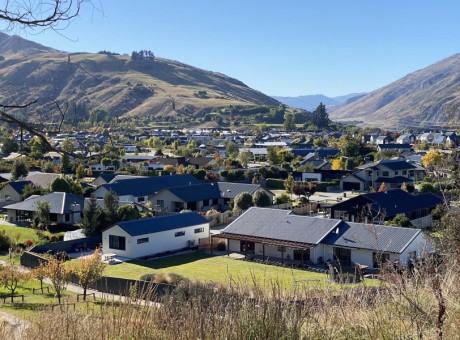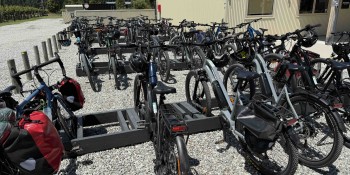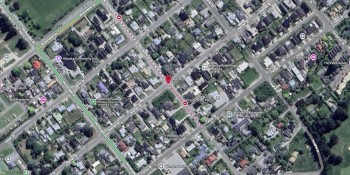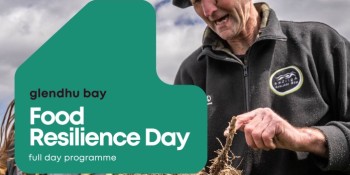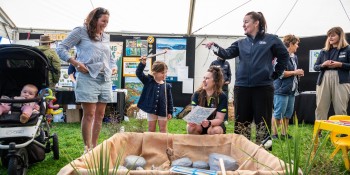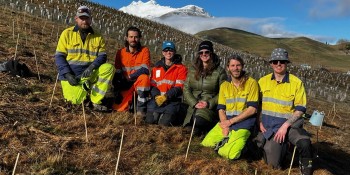Live helicopter demos and skill swapping at country's largest alpine rescue hui

With the number of alpine search and rescue operations increasing three-fold in the past three years, 160 of the country's search and rescue team members congregated in Wānaka yesterday to talk techniques and gear, and to get to know each other outside in a more relaxed environment.
Those involved say it's the biggest turnout they've had for a alpine search and rescue even.
It was held at the Aspiring Helicopters hangar near Glendhu Bay and featured a live helicopter rescue demonstration using a 45-metre rope and showing off the belaying technique used in steep alpine terrain as well as a second rescue demonstration using a 60-metre rope.
Department of Conservation Aoraki Mountain Rescue team leader Dave Lewis, one of the event organisers, says those involved in search and rescue are feeling the impact of the increased amount of rescues on the ground.
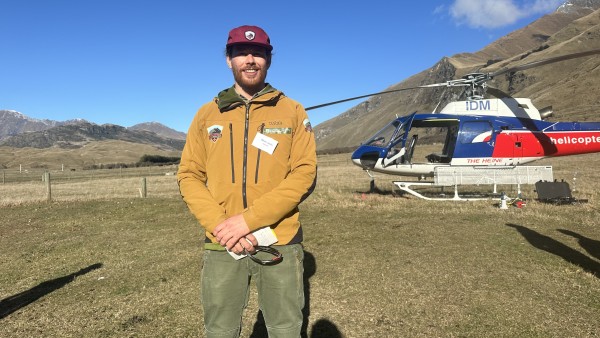
Aoraki Mount Cook team leader Dave Lewis.
He says that's why the hui was so important - particularly having the chance to "get comfortable with each other" outside of the alpine rescue environment.
"Sometimes you'll never have met the helicopter pilot or the winch person and that can be a challenge when you're about to perform a very technical rescue."
Mr Lewis is on the ground undertaking alpine rescues around Aoraki Mount Cook, but there're a lot of different groups involved in any alpine rescue mission, including co-ordinators in Wellington, local police, and helicopter crews.
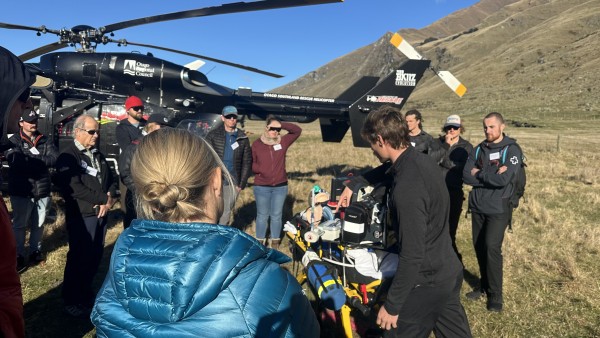
New gear explained to alpine rescue crew.
"I've met people from the tip and tail of the country today...it's a team game, things are easier when you can divide the jobs," Mr Lewis says.
When asked his motivation to be involved in alpine rescues, he answers that one day it could be him out there, in need of help.
"It's comforting knowing that there are people who will get out of bed and come and find you if something's wrong. I do genuinely care about the people I am going out to rescue.
"In the backcountry, things can become hard and uncomfortable quite quick. It's a lonely place out there, particularly when you're hurt."
In the past year, fourteen lives were saved, of people stuck out in alpine environments, with those predominately in Wānaka, the Whakatipu and Aoraki Mount Cook.

Wānaka Alpine Search and Rescue co-ordinator Davie Robinson.
On the ground locally is Davie Robinson, who's been working with Wānaka Search and Rescue for the 25 years, and says it's the busiest volunteer rescue team in the country.
Their alpine team of 18 have experienced the uptake in call outs.
He says the increase is partially because of new technologies such as personal locator beacons and in-reach communication making it easier to ask for help, but also the internet and social media, and more people in the outdoors - sometimes undertaking hikes above their skill level.
Often, they're rescuing people "who are completely out of their depth", he says.
He says before social media, people joined clubs and were mentored and could build up their skills. They received guidance on what hikes they could do, and what ones were too complex.
He says the skillset needed to complete mountain rescues include strong alpine, communication, and rope skills, first aid experience and, for some, helicopter aviation expertise.

Volunteers from Wānaka Search and Rescue at yesterday's event.
"Fourteen of us are pro-mountain guides...we're extremely lucky to have that knowledge and skill base here. We can usually pull together a team, with six or seven at home."
Mr Robinson responded similarly to Aoraki's team leader Mr Lewis when asked why he does what he does.
"For most of us it's a way of giving back to the community. There's not many ways around the area you can contribute with the skill set... and one day, we might need help.
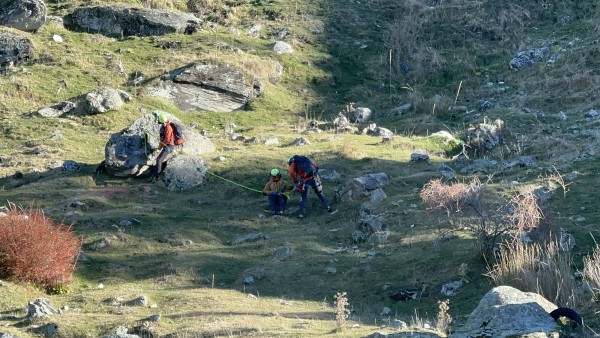
Alpine rescue demonstrators show belay technique - often used in much steeper and snowier terrain.
Mr Robinson has been around mountains since he was a kid, learning to climb in Scotland, before graduating to mountaineering and becoming a professional mountain guide, and he spent a few years in Antarctica working as a guide for scientists.
He was happy to see a good turnout for the event, and have the chance to share ideas amongst the Wānaka, Aoraki and Wakatipu alpine teams, as well as others across the country.
"Any sort of collaboration is a good thing."

Those involved from a-far; SAR co-ordinators from New Zealand Police and Maritime New Zealand: Maritime New Zealand's Co-ordination Centre manager Justin Allen (left), Wellington-based operations and emergency management for police Craig Rendel (middle,) and Otago-based search and rescue for police John Fookes.
Every formal search and rescue will involve either New Zealand Rescue Co-ordination Centre (NZRCC) or New Zealand Police.
It's NZRCC who receive a notification when someone sets off a locator beacon, and police who can receive a phone call when someone's in need of help.

The group gathered to watch two helicopter rescue displays.
Local police officer Senior Sergeant Fookes says the event was really interesting, and an opportunity to get up to speed on all the latest technology.
"The gear and techniques things are rapidly changing every year and it's great for everyone to familiarise themselves."
Police national headquarters manager operations and emergency management Inspector Craig Rendel, who came down from Wellington for the event, says it was great to engage with the "passionate" volunteers.
Mr Rendel says the event gave him a better appreciation for alpine rescue and what police can do to help and support the teams during rescue missions.
Ninety-three percent of the people completing alpine rescue mission are volunteers, he says.
"We are very, very fortunate in New Zealand to have a community of people who provide this outstanding service."
Main image: A SAR volunteer hangs from a 45-metre line above Wānaka as part of a helicopter demonstration at yesterday's event.








